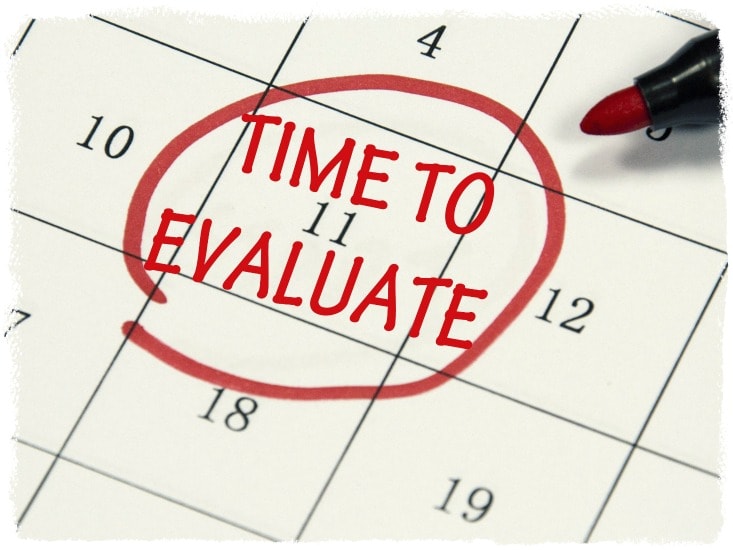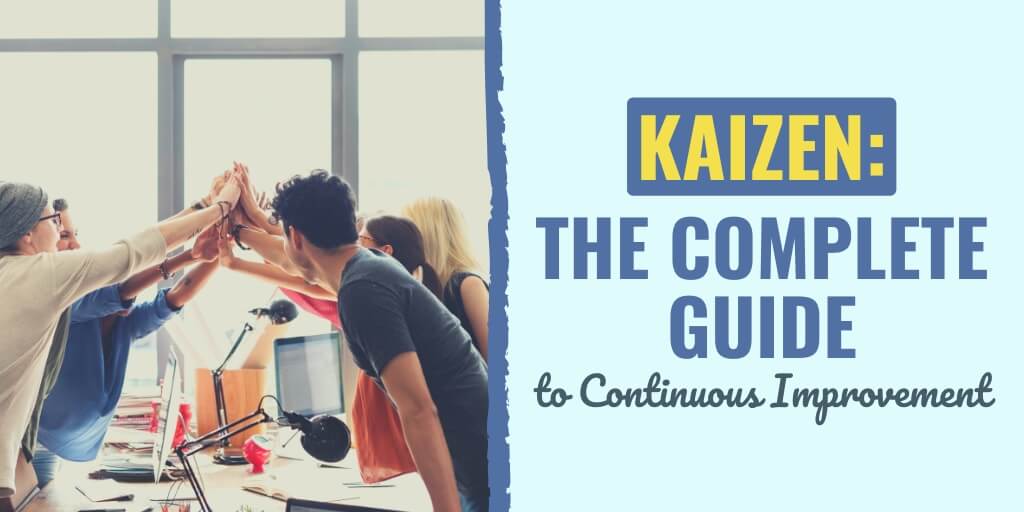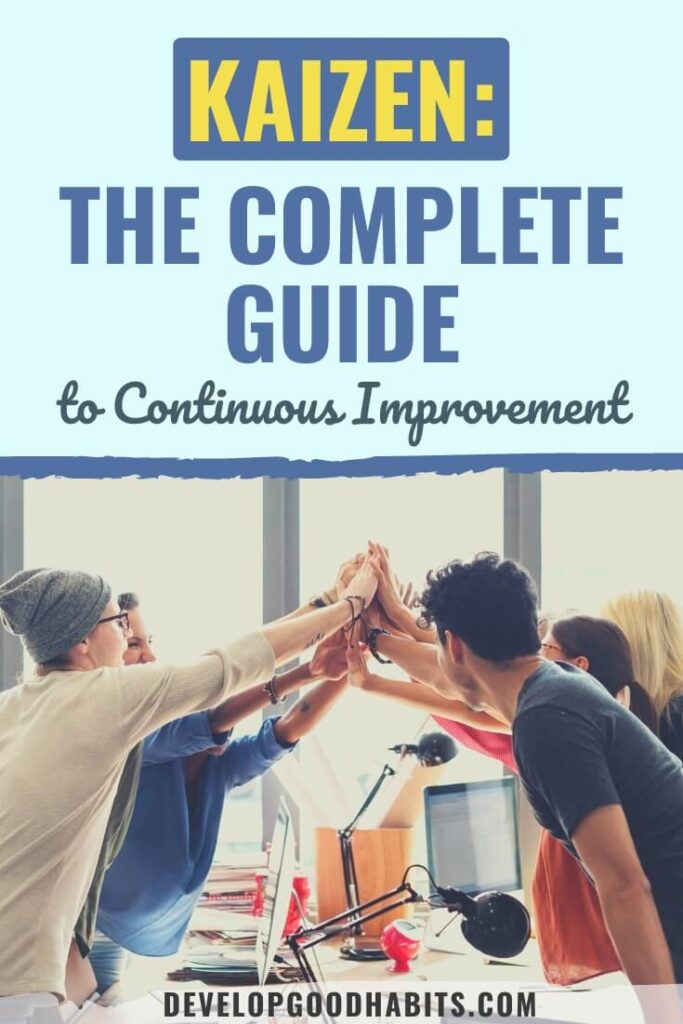There might be affiliate links on this page, which means we get a small commission of anything you buy. As an Amazon Associate we earn from qualifying purchases. Please do your own research before making any online purchase.
With the new year well into motion, are you still focusing on your New Year's resolutions or improving yourself in any way?
Often, people make big promises to themselves at the beginning of the new year that are soon forgotten once the reality of everyday life sets in.
Maybe you told yourself that you would become healthier in the new year, or save more money. Regardless of your main goal, did you set up smaller specific goals that would help you succeed?
I'm not going to pretend that building new habits is easy. It takes dedication, especially if you want to stick with your new habits for the long haul. So what is the best and most effective way to build positive habits and improve yourself?
One method is to focus on a concept called Kaizen, which is a Japanese productivity philosophy that translates to “good change.” With this method, you focus on continuous improvement in your life.
This mindset can be applied to any job or situation, so it has the ability to help anyone who is seeking to improve their life.
In this article, we’ll look at the definition of kaizen, and how you can use this philosophy to improve your habit-building efforts.
What Is Kaizen?
The continuous improvement strategy of kaizen in an organizational setting involves employees at all levels proactively working together to achieve structured, gradual improvements to the manufacturing process.
It essentially combines everyone's talents within an organization to create a powerful team that continues to build upon itself.
Kaizen refers to both the action plan and a philosophy. The action plan portion of Kaizen revolves around organizing events that are focused on improving specific parts of the company to involve employees at all levels, from the president of the company to the plant floor employees.
Kaizen also refers to the philosophy of building a company culture where all employees are involved in coming up with ideas and making suggestions to improve the company. It is ultimately a method of thinking for managers and assembly line workers alike.
The Japanese culture respects and embraces the idea of continuous improvement. When a company applies the philosophy of kaizen to its organization, it creates a daily action plan to study the systems that are being used and how they can be improved.
These companies focus on learning from their mistakes and eliminating activities or procedures that waste time or are inefficient.
Toyota, Japan's auto-industry leader, is well-known for implementing kaizen. In fact, kaizen is one of the core principles of Toyota, whose slogan is “Always a Better Way.”
Within the Toyota Production System, kaizen empowers employees to look for areas of improvement within the company and suggest solutions. This helps to humanize the workplace by bringing everyone together as a team to find ways to improve their systems.
Kaizen also gives each team member a responsibility to adopt the improved procedures and eliminate any waste from their working environment.
History of Kaizen
Kaizen began after World War II, when Toyota enacted “quality circles” in its production process.
These quality circles consisted of a group of employees who were performing similar tasks and gathered together on a regular basis to talk about problems related to work and offer possible solutions.
This concept became popular in Japan during the 1950s, and is still used today. However, the term “kaizen” became famous worldwide through a Japanese organizational theorist and management consultant, Masaaki Imai.
In 1985, Imai founded the Kaizen Institute Consulting Group to bring kaizen to the Western world. To this day, the Kaizen Institute team offers kaizen training courses across almost all business sectors worldwide. The philosophy was also popularized by Imai's book, Gemba Kaizen: A Commonsense, Low-Cost Approach to Management.

10 Principles of Kaizen
According to Kanbanchi.com, there are 10 specific principles of the kaizen method.
Here, we will go over each principle and see how it can be applied to a professional setting, and then see how it can be applied to one's personal life.
1. Never Stop Improving
When a company implements the philosophy of kaizen, they are sending the message that they will never be complacent or feel like they have achieved a service or product that is “good enough.” They will always be looking for ways to improve their practice.
This can also be applied to one's personal life. There will always be something new that you can learn or a skill that you can improve. There is an area for improvement in everyone's life, no matter how successful they are.
Want to learn an important skill, but can’t find the time to work on it? Watch the video below to learn about The 5-Hour Rule, why it’s important, and five simple ways you can implement this concept into your busy schedule.
2. Eliminate Old Practices
An important part of avoiding complacency is getting rid of old and tired traditions that are outdated.
Because we live in a culture that is constantly making changes and improvements, it is important for businesses to keep up with this in order to stay relevant.
To get rid of old practices in your life, learn about leveling up your day by improving upon things that you already do. Let go of former habits, even if they seemed to have some benefit to you at the time. As time progresses, you should progress also.
3. Be Proactive
It is important to not let excuses get in the way of improvement, and for each person in the organization to be proactive in making improvements.
While it is one thing to sit around and talk about the improvements that need to be made, it is another thing to actually make an action plan to implement the changes.
If there is something you want for yourself, go after it. Stop hesitating because of possible hurdles that you foresee, and move forward toward your goal.
For example, if your goal is to get a job at a certain company, take the first (and second, and third) step to make contacts at the company and network with people who may be able to help you get a job. Don't wait for the job to come to you.
4. Don't Assume New Methods Will Work
Just because a method is new does not mean that it is improved. It is important to move far beyond the status quo in order to be successful in business. This will likely require trial and error until success is achieved.

When it comes to your personal life, it might take some time to find a method that works for you when it comes to achieving your goals. Just because something worked for someone else does not mean that it will necessarily work for you.
For example, let's say you are trying to lose weight and a friend at work had great success with a very specific diet that she found online.
Just because this worked for her does not necessarily mean that it will work for you, so don't assume this new method is what will bring you success. Try a few things out before you commit to a new method.
5. Make Corrections
Part of the trial-and-error process requires making corrections to practices or processes that have something wrong with them. It is critical to continue to make corrections throughout the process in order to keep improving.
In your own life, if you are trying to maximize your time during the day so you can live more efficiently, it is important to make corrections as you go along.
Start some new habits to correct the things that you may have been doing wrong up until this point. Recognize the areas in your life that can use improvement, and make relevant corrections to help you progress.
6. Empower All Employees to Speak Up
Everyone who is involved in the success of the company—from the CEO to the line workers—should be encouraged to offer suggestions and solutions for problems that can be fixed, or improvements that can be made.
While you do not have employees managing your personal life, you can still encourage your friends and family to make suggestions if they see things that you could work on.
While you may think that you are making positive changes to your diet by switching to sugar-free yogurt, for example, a friend who is knowledgeable in nutrition may have other suggestions that will actually lead you in a more healthy direction. Talk to other people about your goals and get their input.

7. Crowdsource
Before implementing a change or possible improvement, talk to several people to get their input. Having multiple opinions can not only add to a possible improvement, but it may also offer a different perspective that will open up more new ideas.
Talk to other people about what they are doing in their lives to improve themselves. You will likely be able to learn from other people and get some new ideas on things you can add to your routine to create continuous improvement.
8. Practice the “Five Why” Method
Before making any final decisions, get to the root of the problem by asking “why?” five times. By repeatedly “why?” one can get past the layers of issues that can lead to the root of the problem. Often, the assumed reason for a problem will actually lead to another question and dig deeper into the issue.
Maybe you have been telling yourself that you do not have time to workout, and that is why you are out of shape.
Well, why don't you have time?
Is it because you work full time and you have a family?
Many people who are in that same situation are able to make time to workout. So why is that stopping you?
Maybe because after work you need to get home and get dinner ready for the kids and then get them to bed?
So then why can't you work out in the morning instead?
Is it because your mornings are rushed by the time you get up?
Why can't you get up earlier?
Maybe the final reason is that you are not motivated enough.
By continuing to ask yourself “why?” you are likely to find the real reason behind a problem.
9. Be Economical
Watch your finances during the whole process of making an improvement. Look for ways to save money while making small improvements, and then spend the saved money on further improvements.

A common goal of improvement is to save money or stop spending so much money on XYZ. Consider specific things you can save money on each week, and stop buying them.
For example, perhaps you go through rolls and rolls of paper towels each week because you use them to clean up everything. Consider switching to reusable cloths that you can stick in the washing machine, and take the money you are saving each week on paper towels and apply it to something else.
10. Don't Stop
Never consider yourself to be finished. Improvement has no limits, and can be continued on an infinite level.
You can always improve yourself. Whether it is learning something new or perfecting a skill you already have, there is room for improvement in everyone's life.
How Kaizen Can Improve Your Life
Big goals can be overwhelming. The daunting feeling of taking the first step can cause people to procrastinate or even quit before they start.
While large, radical changes sound good on paper, they can actually make you more resistant to change. You need to consider your resources so you know what outside factors you can use to help you achieve your large goal.
Also, life happens. As time passes you by, your goal may seem to become farther and farther from being achievable. It is important to keep doing actionable tasks that help you move toward your goal on a regular basis.
These actionable tasks are small, incremental changes that will make a lasting change in your life.
For example, let's say your final goal for the year is to get a job at one of the top marketing firms in your city. What would you have to do each day to move you closer to this goal?
You can break this down into manageable pieces by telling yourself that after every weekday you will spend half an hour learning about marketing that is relevant to your city.

After one month of doing this, you will be more proficient in the field. During the second month, you can connect with people who currently work in marketing in your city through social media, and spend that half hour tweeting local professionals and building networking relationships.
Focus on small daily tasks that will help you move toward one big goal. This way, you can make progress while still managing to balance the other areas of your life. If you stick to the process and commit to it, the positive results will come.
Trying to take on too much at one time can lead to burnout and a lack of progress. When you focus on small tasks and are able to see little results, it will encourage momentum. Keep yourself accountable for your daily tasks, even if they are small.
Try to do something just a little bit better each day in order to make a large impact in the long run. But remember, kaizen on a personal level doesn’t work as perfectly as it does within a corporate or industrial setting.
Humans are emotional beings, after all, and we tend to neglect our goals in times of stress. Without the support of an entire company, it all falls on you to either keep going to achieve your goal, or to slow down.
Two Ways to Build the “Continuous Improvement Habit”
You can use these methods to implement kaizen in a stress-free environment, even if feel overwhelmed on a daily basis. Here are two ways to build and implement kaizen in your own life.
Method #1: Start Asking Small Questions
It is not uncommon to have a challenging goal, yet have no idea where to start in achieving that goal. Some people want to get in shape, some want to start their own business, and some want to improve some relationships in their lives.
However, these are not measurable goals, so they likely feel overwhelming, which can easily set someone up for failure. As soon as someone with a large goal gets frustrated, they are likely to quit.
The idea behind asking small questions is to think of any goal that you’d like to achieve and ask yourself simple questions about the easiest ways to get started. These questions are likely to help you come up with smaller, actionable goals that are both simple and reasonable.
For example, if you are working on a goal for your career, you may ask yourself, “What is the one thing I can do today to improve my productivity?”

This question will lead you to a specific task that you can complete that is realistic for the day. Maybe all you need to do that day is to set specific times during the day where you will check your email or return phone calls.
You can dedicate the rest of your day to doing uninterrupted work so you can stay on task and not have to repeatedly get resettled with what you were working on.
Alternatively, if your goal has to do with finances, you can ask yourself, “What can I do today to reduce the balance on my credit card with the highest percentage?”
This is a much more reasonable action item than a broad question of, “How can I improve my finances?” You may decide to add $10 to each payment of your debt that will go straight toward the principle.
This way, the debt will be paid down faster and you will be free from spending money on the interest that the account is accruing.
If you are working on your health, perhaps you will ask yourself, “What is one type of healthy food that I can introduce into my diet?” Or, if you are trying to reduce your stress, you may ask yourself, “How can I get an extra 5 to 10 minutes of relaxation during my busy workday?”
An easy thing to do to help reduce your stress a little bit each day is to learn how to meditate or practice mindfulness for just a few minutes during the day to help re-center yourself.
It is very common to want to improve relationships, whether it be with a spouse or another family member. A great short-term question for improving relationships is, “What is one thing I can do to show my appreciation to my spouse?”
Maybe you will decide to write them a quick thank you note for the things they do to help you out, or remind them why you love them.
Alternatively, if you want to improve your service to a larger population, you may ask, “Who is struggling in the world right now, and what is one small thing I can do to help them?”
Or, if you are trying to improve your spirituality, you can ask yourself, “What is one quick habit I can build that will help me relax daily?”
All of these small questions lead to goals that are specific, measurable, achievable, realistic, and timely.
To learn more about SMART goal setting, take a few minutes to watch the video below:
Method #2: Build Small Habits Into Your Daily Routine
Mini-habits is a term coined by my friend Stephen Guise, in the book of the same name.
A “mini-habit” is a small positive behavior that you make yourself do each day. The behaviors are meant to be so small that there is no way you can fail. They are weightless tasks that are powerful as they accumulate into a habit.
The key here is that the hurdle to taking the first step is so low that even people with the least amount of motivation can find success early on and start to reverse their lives.
There is also a similar concept called Tiny Habits, which is a phrase created by BJ Fogg. This is also all about taking baby steps to achieve a final goal.
The purpose of these mini-habits is to take away the resistance that you feel when it comes to starting a difficult (or time-consuming) task.
For example, it is easy to schedule an activity into your day (like running for an hour), but it’s hard to complete it when you feel a lack of interest. If you always feel like there is something you would rather do with your time, you are likely to never get around to starting your run.

Mini-habits are effective because they eliminate motivation from the equation. Instead of setting an extremely challenging goal, you set a “low-ball” goal that makes it super simple to get started. Instead of setting a goal of running for an hour, tell yourself you will run for one minute.
Then, the next day, increase it a bit. Continue to make small increases to your goal until, eventually, you are running for an hour.
In other words, the simplest, most effective way to create a lasting change is to create a goal that might seem too easy to complete, but is also so easy that you can do it on a consistent basis.
Each incremental change can be equally as simple, but in the long run, the small changes will add up to a positive life change.
Final Thoughts on Kaizen for Life and Work
Building a culture of continuous improvement both in the workplace and in your personal life starts with finding a strategy that works for you.
The strategy has to be in line with the current business model or culture of an organization, or your own personal lifestyle.
While every person and organization is unique, the steps that are needed to build a culture of continuous improvement are the same.
Start by asking small questions, and build small habits into your daily routine to begin to create a lasting change.
These small changes will not seem daunting or intimidating, and they will eventually become such a normal part of your routine that you will forget the days where you were not practicing these positive habits.
Kaizen is a positive philosophy that can be a strong motivational tool for teams and individuals alike.
Take some time to consider how kaizen can be applied to your life, and then keep thinking a bit deeper and deeper to find all of the improvements that you may be able to begin making right now.
And if you're looking for more resources on improving your work skills, be sure to read these articles:
- 101 New Skills: Learn Something New
- How to Use Deliberate Practice to Master a Skill
- 7 Self Management Skills You'll Need at Work
Finally, if you want to take your goal-setting efforts to the next level, check out this FREE printable worksheet and a step-by-step process that will help you set effective SMART goals.



This is a great article for those in management positions. Been intensely been involved with Kaizen Costing.
Kaizen as an opportunity in all things!
Kaizen grows in the veins of traditional management.